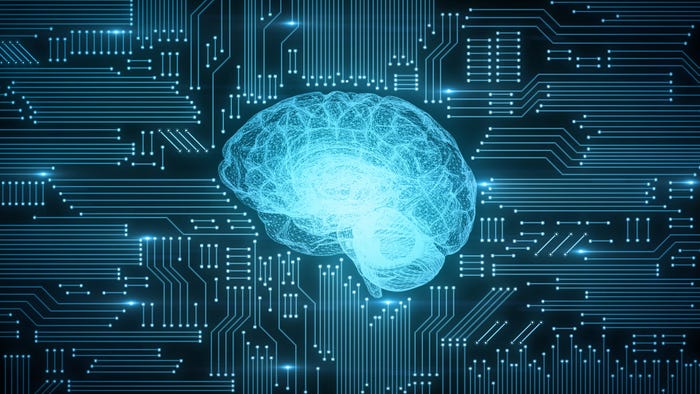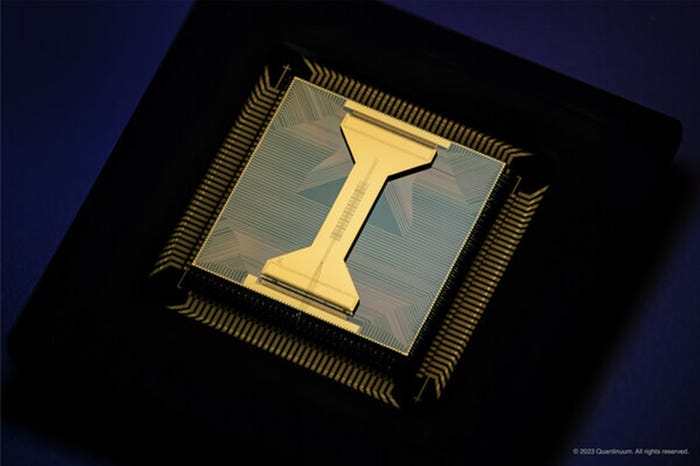The Edge vs. Cloud Debate: Unleashing the Potential of on-Machine ComputingThe Edge vs. Cloud Debate: Unleashing the Potential of on-Machine Computing
Propelling the shift to the edge is the potential of AI and machine learning

Edge computing is at a tipping point – it’s time to unleash the potential of the edge. The cloud is dead and long live the era of the edge.
Ten years ago, technology transformation meant embracing a move to the cloud for decentralized computing and processing of the massive amounts of data enterprises generate and manage to run their businesses. Since then, computing has evolved dramatically, swinging back and forth between more centralized or on premise approaches to hybrid models in the cloud. All that’s changing.
The most exciting developments in compute architecture are happening at the edge as software innovation moves away from the cloud. By 2028, a majority of enterprises will be using edge computing, according to the Linux Foundation. In addition, Gartner predicts that by 2025 more than 50% of enterprise-generated data will be processed outside a traditional centralized data center or cloud. This prediction is already playing out as the cloud begins to lose its hold and relevance, evidenced by the slowing of its previously sustained growth. Most recently in the first half of 2023, the largest hyperscalers reported for the first time a slowdown in their cloud businesses.
With the recent rapid rise of AI services and systems creating a demand for more optimized and efficient computing, this makes sense. It is estimated that up to 20% of the world’s total power will go to computing by the end of the decade unless new compute paradigms are created. We can’t afford the power consumption data centers require and we are reaching a limitation of what they can effectively process. Ultimately, we need to move closer to where the data is created for real-time insight, review, security and feedback.
And this need is only accelerating. According to Gartner, in 2018, 25% of enterprise-generated data was created and processed at the edge. In 2025, Gartner expects that 75% of enterprise-generated data will be created and processed at the edge.
If the future of software innovation is AI; AI and the advancement of machine intelligence will only be accelerated by the edge. This opportunity is massive with the expectation that enabling AI and ML for these edge devices will be a $76 billion market by 2031. This is the foundation of the biggest technological shift we will see this decade, modernizing industries into the 21st century with endless, transformative applications that touch every aspect of our lives.
Why Is the Tide Turning Back to “on-Machine Computing”?
There are three core benefits in returning to centralized computing at the edge – the instantaneous speed to process and analyze data, the additional control and security over an enterprise’s information and the ability to manage costs more efficiently.
Enterprises can no longer afford the latency of the cloud. We have to get closer to the compute. More than ever before, enterprises run on access to real-time insights. Any business process that requires seamless speed of information must bring the compute to the data at the point of its creation and consumption. This is even more evident when leveraging AI and ML as seconds and minutes matter most in the moment of analysis and decision-making. There is a limitation in the cloud for immediate feedback. Most processes cannot wait the time it takes to send the information to the cloud and have it return a result. Imagine an autonomous vehicle's reaction time to avoid running into an unexpected pedestrian. The AV does not have the luxury of time to wait for the cloud to return an insight on the unforeseen obstacle in its path.
In addition, the edge offers companies more opportunity to keep the data within their own walls. As concerns of software supply chain hacks and security threats continue to grow, the edge removes the need to constantly move large amounts of data. This also increases reliability, privacy, and compliance with ever-evolving regulatory requirements. Ultimately, the edge gives enterprises an additional layer of self-governance and autonomy over their information.
Finally, if an enterprise owns its compute, it can be more cost-efficient than managing it in the cloud. The edge requires less bandwidth and network resources. Devices do not have to continually connect to the internet for data transfers and the edge reduces the costs of network usage. The ongoing movement of data within cloud hosting services is one of the largest operating costs for an organization. Also, the more data that’s moved, the more it costs. The edge eliminates the need to move data since it's processed within the location it’s generated and reduces the bandwidth required to manage the data load.
As more enterprises and industries embrace the edge for compute, and apply AI and ML to all types of devices that exist between a data center and a smartphone, these benefits will only compound, opening up new, vast opportunities.
This move to the edge is already happening and nowhere is this more evident than in the resurgence of smart manufacturing.
The Edge’s Revival of Industrial 4.0
The promise of technology, automation and applied intelligence within manufacturing has yet to be realized. The call to modernize the industry has been a widely recognized and long-debated topic over the last 10 years, though little has propelled it into reality.
As the industry continues to rebuild from the pandemic, facing shortages of labor, materials and all-time high demands, the shift to edge computing will deliver on the promise of innovation. Industry 4.0 is primed to realize the benefits of on-machine computing and it will be one of the first that demonstrates the edge’s potential.
According to 451 Research, nearly 70% of manufacturing IT is set to be deployed at the edge within the next two years. In a move to the edge, manufacturers will be able to:
Efficiently process data, with shorter response times and more actionable results;
deploy AI and ML models to complement human-driven tasks like production line supervision and quality control; and
strengthen security and protection over its data and products.
With an edge computing model, factory floors become the central hub of where data is transmitted, processed and analyzed. This allows manufacturers to gain intelligence and implement changes in near real-time vs. waiting hours or days for analysis of a facility's data.
What does this look like in reality? Think about smart factories for automakers. In welding the frame of a car, with the edge, factory floors can be powered with autonomous robots that react and address issues on the spot. The edge provides an avenue to create the most intelligent robotics and manufacturing applications, powered with expedited processing, analytics and communications.
About the Author
You May Also Like








